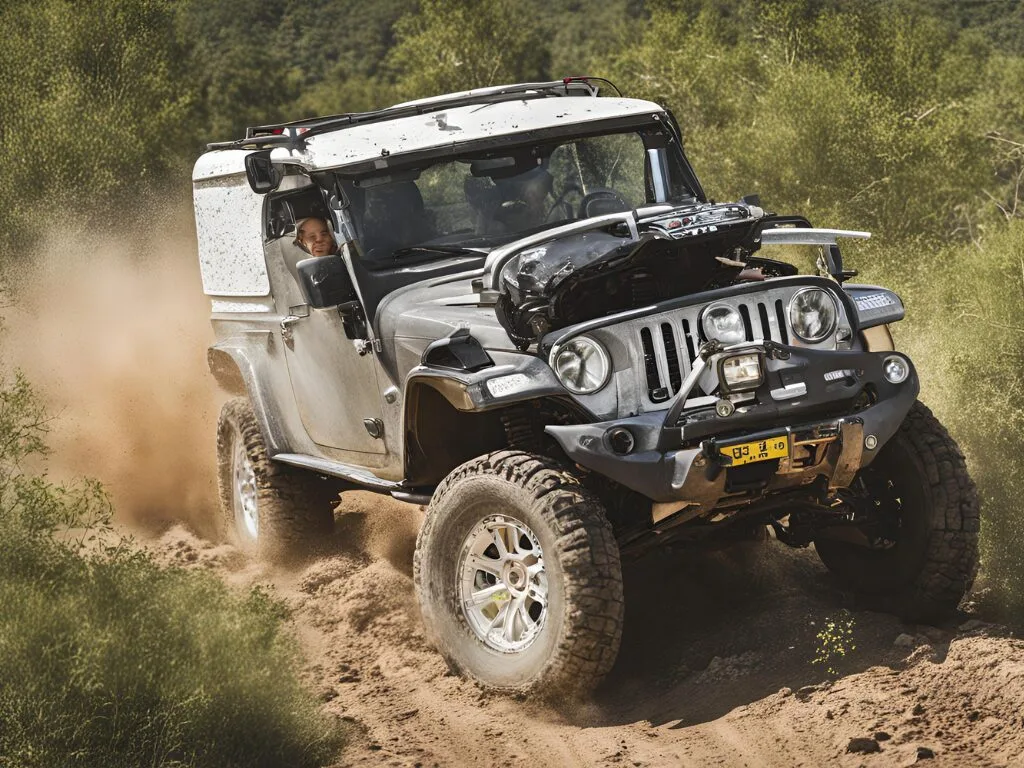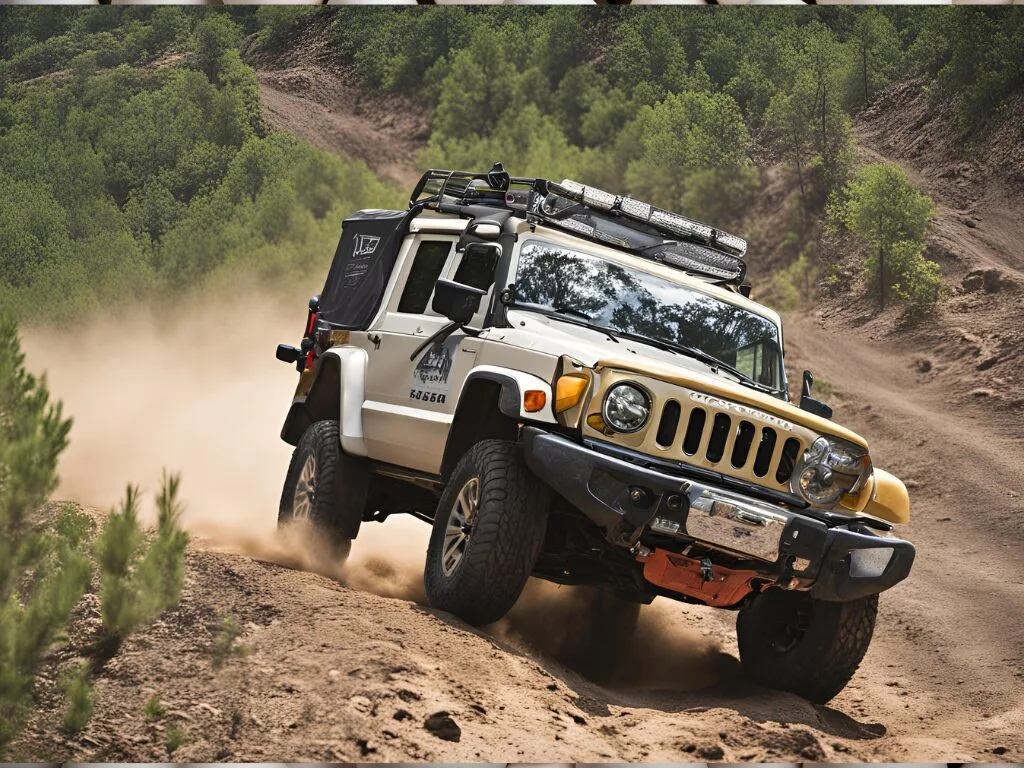Stay cautious and wear appropriate Off-Road Safety Tips to prevent injuries. Always inform someone about your travel plans and estimated return time.
Exploring the rugged terrains and experiencing the thrill of off-roading calls for keen attention to safety measures. To ensure your adventure doesn’t turn into a mishap, it’s crucial to equip your vehicle with necessary safety features and perform a pre-trip inspection.
Seasoned adventurers and novices alike must be familiar with the basic off-road driving techniques and remain vigilant at all times. Keeping a safe speed, understanding the capabilities of your vehicle, and respecting the environment are pillars of a successful off-road experience. Bear in mind that preparation is just as important as the execution; hence, a well-thought-out plan and a toolkit can make a significant difference in handling unforeseen situations. Embrace the excitement of off-road journeys while prioritizing your safety with these fundamental tips.
Embracing The Trail: Preparing For The Journey
Imagine the dusty paths and the thrill of the unknown as you prepare for an off-road adventure. It’s a world where meticulous preparation meets wild terrain. Each step you take to prepare could be the difference between a memorable journey and a stranded situation. Strapping in for this ride means arming yourself with knowledge and gear.
Gearing Up: Essential Equipment For Off-roading
Equip yourself to face the unpaved paths with the right gear. Start with these essentials:
- Traction aids – for when the mud gets deep.
- Recovery kit – includes snatch straps and shackles.
- Air compressor – to adjust tire pressure for differing terrains.
- Navigation tools – to stay on track, a GPS and maps come in handy.
- First aid kit – safety first, always be prepared for injuries.
Note: This is just the beginning. A complete check-up of your vehicle is crucial.
Know Before You Go: Researching Off-road Trails
Knowledge is power, especially on trails less traveled. Here’s a table breakdown to get you started:
| Research Task | Details |
|---|---|
| Landscape | Type of terrain, altitude changes, and obstacle notes. |
| Weather | Check forecasts for the day, be ready for surprises. |
| Regulations | Land use permissions and off-road laws. |
| Difficulty | Trail rating systems inform about the challenge level. |
| Community Insights | Online forums and clubs offer valuable, real-time advice. |

Driving Techniques To Master The Off-beat Path
Off-road adventures offer thrilling experiences.
Challenging terrains await those ready to tackle them.
Mix caution with boldness as you master these techniques.
Navigating Rough Terrain: Steering And Throttle Control
- Stay alert to avoid obstacles.
- Use gentle steering inputs for stability.
- Low speeds help in maintaining control.
- Throttle control is key on uneven grounds.
Practice these skills in safe environments first.
Water Crossings: Dos And Don’ts
Water hazards pose unique challenges.
| Do’s | Don’ts |
|---|---|
| Check depth and current strength. | Rush into unknown water bodies. |
| Use a low gear for steady pace. | Change gears while crossing. |
| Keep the engine running to prevent water intake. | Stop midway unless necessary. |
| After crossing, test your brakes. | Ignore maintenance post-crossing. |
Respect the water and prepare for potential risks.
Buddy System: Advantages Of Off-roading In Groups
Embarking on off-road adventures with friends or fellow enthusiasts adds a layer of safety and fun. The buddy system ensures that someone always has your back in unfamiliar and challenging terrains. This teamwork approach improves the overall experience while providing practical benefits.
Communication Tools: Staying Connected Off The Grid
Seamless communication is crucial during off-road excursions. Groups maintain contact through various tools:
- Two-way radios: Effective for short-range conversations.
- Cell phones: With limitations due to signal availability.
- Satellite communicators: For remote areas without cell service.
Keeping the group informed of each member’s whereabouts and status ensures a safer trip for everyone involved.
Rescue And Recovery Planning
An organized group approach streamlines rescue and recovery efforts when challenges arise. Planning typically includes:
| Task | Details |
|---|---|
| Designating Roles | Assigning specific roles, such as leader and mechanic, to group members. |
| Recovery Gear | Group members pool resources, like winches and tow straps, for efficient use. |
| Emergency Plans | Creating and sharing a step-by-step plan in case someone needs help. |
This planning allows the group to act swiftly and with confidence during unexpected situations.
Overcoming Obstacles: Practical Solutions In The Wild
Adventurous off-roading leads to unexpected challenges.
Rocks, mud, and fallen logs are just a start. Staying prepared with the right know-how turns obstacles into stories worth sharing. Master these solutions to keep the wild just wild enough.
Winching Out: A Step-by-step Guide
Getting stuck happens to the best. Winching out safely is key.
- Check your gear. Ensure the winch cable is not frayed.
- Find a solid anchor. Use trees, rocks, or ground anchors.
- Attach the winch cable securely to the anchor point.
- Pull slack from the cable. Activate the winch slowly to tighten.
- Winch out steadily. Keep steady tension, guiding your vehicle free.
- Inspect equipment post-recovery. Look for potential damage.
On-the-trail Tire Repairs
A flat tire shouldn’t end your journey.
- Carry a repair kit. Plugs, patches, and a compressor are a must.
- Find the puncture. Look for nails or sharp rocks.
- Clean the hole. Use the kit’s tools to prep the puncture.
- Insert the plug. Drive it in with a sturdy hand.
- Inflate the tire. Use your onboard air compressor.
- Check for leaks. Listen for escaping air, watch the plug.
Safety First: Mitigating Risks And Injuries
Exploring rugged terrains is thrilling. Yet, safety remains paramount. Preparing for potential risks and injuries ensures an adventure stays fun. Here, some crucial off-road safety tips come into play.
Emergency Preparedness: Navigating Unexpected Situations
Smart planning is essential before hitting off-road trails. A Off-Road Safety Tips checklist can make all the difference.
- Inform someone about your plans.
- Carry a map and compass, GPS devices can fail.
- Vehicle check-up is non-negotiable; focus on tires, brakes, and lights.
- Emergency kit: This should include flares, a flashlight, extra batteries, and a fire extinguisher.
Off-road First Aid: Managing Common Injuries
Accidents can happen. A well-stocked first aid kit is vital. It can address injuries quickly, limiting severity.
| Item | Use |
|---|---|
| Bandages and sterile gauze | To cover wounds |
| Antiseptic wipes | For cleaning injuries |
| Painkillers | For managing pain |
| Tweezers | For removing debris |
| Elastic wraps | For supporting sprains |
Get first aid training. Knowing how to use these items is just as important.

Leaving No Trace: Ethical Off-roading Practices
Leaving No Trace: Ethical Off-Roading Practices are key to enjoying the thrill of the ride without harming the environment. Off-roaders have a responsibility to maintain the natural beauty they come to explore. Keeping this balance ensures that these adventurous tracks remain open and unspoiled for generations.
Environmental Considerations And Sustainability
Being mindful of the environment is crucial while off-roading. Here are actionable steps every rider can take:
- Stick to Designated Trails: Prevent soil erosion and habitat destruction by riding only on established paths.
- Avoid Sensitive Areas: Stay clear of wetlands, meadows, and other fragile ecosystems that can be easily damaged.
- Carry Out What You Carry In: Leave no garbage behind; always pack out trash, including food wrappers and spent fluids.
- Use Eco-Friendly Products: Choose biodegradable soaps and avoid spilling fluids on the ground.
Respectful Riding: Coexisting With Nature And Locals
To maintain a good relationship with nature and local communities, consider:
| Action | Benefit |
|---|---|
| Minimize Noise Pollution: Use quieter vehicles and mufflers to reduce disturbance. | Keeps wildlife stress-free and locals happy. |
| Yield to Non-Motorized Trail Users: Give way to hikers, horseback riders, and cyclists. | Promotes safety and cooperation on shared trails. |
| Respect Trail Closures: Heed signs and barriers that indicate restricted areas. | Preserves sensitive habitats and prevents conflicts. |
| Engage with Local Communities: Learn about and support local norms and economies. | Builds rapport and ensures off-roaders are welcome. |

Frequently Asked Questions For Off-road Safety Tips
What Should I Pack For Off-road Safety?
Essentials to pack include a first-aid kit, spare tire, jack, and tire tools. Also bring water, non-perishable food, and a map or GPS. Remember to carry a flashlight, matches, and a survival blanket for unforeseen situations.
How To Prepare Your Vehicle For Off-roading?
Inspect your vehicle thoroughly before heading out. Check fluid levels, tire pressure, brakes, and suspension. Invest in off-road tires and consider additional protection like skid plates. Make sure your lights and communication devices are in working order.
Are There Off-road Driving Techniques?
Yes, there are specialized techniques. Keep the vehicle in low gear for better control. Drive slowly to navigate obstacles carefully and avoid sudden maneuvers. Learn to read the terrain and adjust your speed and approach angle accordingly.
Can Weather Affect An Off-road Adventure?
Absolutely, weather can have a major impact. Wet conditions can make paths slippery, while heat can lead to dehydration or overheating of your vehicle. Check the forecast and prepare for weather-specific challenges.
Conclusion
Navigating the rugged paths of the off-road can be an exhilarating experience. With the right preparation and respect for safety guidelines, your adventures will be memorable for all the right reasons. Remember, the trail is both a challenge and a responsibility; so gear up, stay aware, and keep exploring.
Drive safe and treasure the ride!


